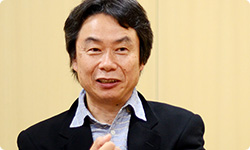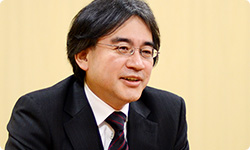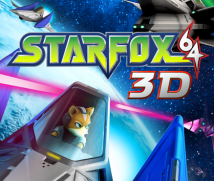3. Fushimi Inari Taisha and Fox
With regard to the animal characters that appear in Star Fox , what kind of requests did you make, Miyamoto-san, and how did Imamura-san go about drawing them?
Most of the sci-fi in Japan back then was robot anime, superheroes and monsters. But I wasn’t interested in doing the same thing.
I can understand that you wanted to do something clearly different from the existing science fiction, but why a fox?
I had been drawing animal characters for a long time, so I suggested animal characters to Imamura-san. He was surprised. (laughs)
(laughs)
We were thinking, “But animal characters in a shooting game?” and then “That’s precisely why it would have impact!” and started thinking about which animals to use.
I see.
Star Fox has a lot of scenes in which the fighter goes through arches , which reminds one of the gates at Shinto shrines called torii. And torii made me think of the thousands of such gates at Fushimi Inari Taisha.11 In a prototype, there were lots of scenes like going through there. And when you think of Fushimi Inari, you think of foxes. 11. Fushimi Inari Taisha: The head shrine of all the Inari Shrines in Japan dedicated to the god Inari. It is known for paths lined with a thousand vermillion torii gates and imagery of a fox which is the messenger of Inari God.

Oh, so that was the train of thought that led to a fox! (laughs)
Yes. (laughs) Fushimi Inari Taisha is about a 15-minute walk from our former head office12, and there used to be a boys’ baseball team in the area called the Inari Foxes. I thought, “Foxes! Now that’s cool!” 12. Former head office: Before Nintendo’s head office moved to Minami Ward, Kyoto City (its current location) in 2000, it was in Higashiyama Ward, Kyoto City. The former head office’s location is now occupied by the Nintendo Kyoto Research Center.
(laughs)
So it was the English word “fox” from the start—not the Japanese word kitsune.
I see.
Er…may I jump in?
Of course.
I borrowed some of the Star Fox original art that Imamura-san drew. This is it.
Yep, this is it!
That sure takes me back!
There’s a torii down by Fox’s feet! (laughs)
Oh yes! (laughs)
And the other main characters—a bird, hare and toad. Now I understand about the fox, but why a bird and hare?
I heard directly from Imamura-san that he drew upon Japanese folk tales. That’s how he decided on Peppy the hare and Falco the pheasant.
Oh, I see. (laughs)
And there’s a Japanese expression about fighting like dogs and monkeys, so he had a force of dogs fighting a force of monkeys.
But why a toad?
That is a bit unusual. (laughs) I remember when Imamura-san was drawing that picture, I said, “A toad might be alright, too.”
Remember that one person on the staff?
Oh yes! (laughs)
Hm? Oh right! There was a staff member who used a toad like a personal mascot, always writing “ribbit, ribbit” and such on memos. (laughs)
That’s right. (laughs)
EAD’s games often have characters originate in the staff. (laughs)
Yep. Yoshi was like that—sort of homegrown. (laughs)
For the packaging of the Super Famicom version, you made puppets and photographed them. Why did you decide on that kind of design?

I always loved English puppet drama, like the Thunderbirds.13 13. Thunderbirds: A television special effects series featuring puppets. It was produced in England in 1965 and broadcast the same year in Japan on NHK.
I loved that too! (laughs)
Back when we released it, I imagined Star Fox selling a lot and the company that produced Thunderbirds coming all the way from England for negotiations to adapt it into a puppet drama.
I see. (laughs)
And then I would say, “To be honest, I’ve always loved Thunderbirds.” Licensing it out was a dream of mine. And that’s all it ever was! (laughs)
(laughs)
So that was your ambition! (laughs)
Yes. (laughs)
So for Star Fox 64, even though we would usually want the character animation to look natural, we had puppets in mind, so the characters’ mouths pop open and closed .
You did that on purpose?
Yes. We cut down on the animation.
Some people back then said it would have been cooler with robots. But at the time, since lots of representative hit sci-fi works like Star Wars14 and Mobile Suit Gundam15 had already come out, what was most important to me was creating our own original science fiction. I didn’t want to just make a video game version of existing sci-fi. So a fox was the only way to go! (laughs) 14. Star Wars: Released in 1977, it was the first in a popular series of science fiction movies made by George Lucas. 15. Mobile Suit Gundam: A robot anime series in Japan that first appeared in 1979. Produced by Nippon Sunrise, Inc. (now Sunrise, Inc.).
(laughs)
But I think it’s great that we used a fox. The first-generation face was a little weird, but as the hardware progressed, little by little he became a cool fox!
That’s right. Fox’s face on the Super Famicom system was really something! (laughs)
(pulling out both his cheeks) Like this.
(laughs)
